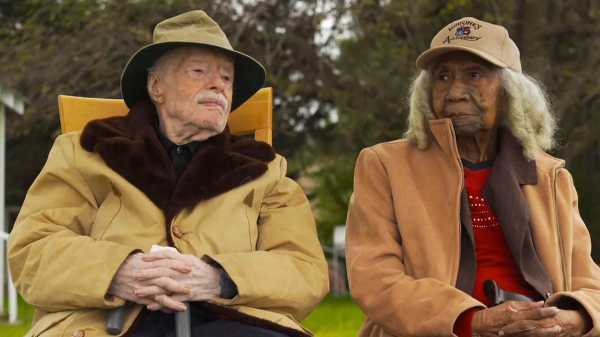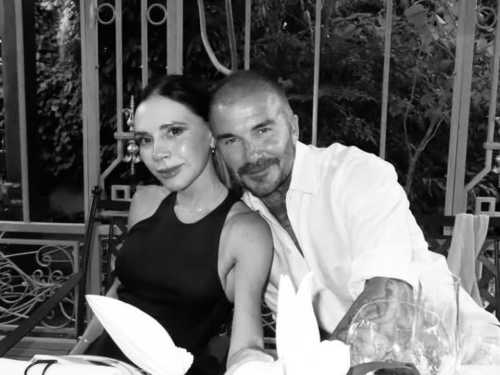
There’s a peculiarity in the Academy’s three short-film categories: Live
Action, Documentary, and Animation. The awards, which define “short
films” as ones running forty minutes or less, are a holdover from
earlier eras of moviegoing, when programs often included newsreels or a
travelogue, a musical short, plus a dramatic or comedic short, along with
any trailers. Now shorts are shown at film festivals and put
online—they have almost no life in commercial theatrical release (except
for an occasional Pixar short that the studio will show alongside one of
its features). Yet they do get made, often for a basic reason:
a filmmaker has a desire to make one. Also, there’s the occasional
compilation film, for which a group of filmmakers each make a short on
one collective theme or basis, such as
“collective:unconscious,”
from 2016.
Here’s the peculiarity: the animated shorts, which tend to be technical
exercises akin to calling cards or showreels, tend to be very short—
under ten minutes (as are four of the five nominees this year). The
live-action shorts are similarly professional, miniature samples of an
Oscar-aspiring level of technical sophistication, exactly the opposite
of the low-budget, locally made, spontaneous, and personal projects that
tend to make the best shorts. Four of this year’s nominees, the four
most substantial, run twenty to twenty-two minutes (films of this length
used to be called “two-reelers”); one, a comedy of thirteen minutes, is
like a “one-reeler.” (From 1936 to 1956, those two lengths were
separate Oscar Short Subject
categories).
Even the categories of this year’s four “two-reelers” appear calculated
for Oscar recognition: a school shooter, a deaf child, a religious
conflict in Kenya, and the lynching of Emmett Till—all worthy subjects
for movies, but when they’re treated briskly in such brief and slick
movies, the show of worthiness takes precedence over both substance and
creative originality.
The documentaries are different. Every winner this century has run
longer than a half hour; all but a handful are thirty-nine or forty
minutes long. All five of this year’s Documentary Short Subjects run at
least twenty-nine minutes; two run forty, and they aren’t really shorts
but featurettes that are both so ample in their subjects and so detailed
in their presentation that they seem almost like conventional-length
features that have been virtually fast-forwarded for short-subject
consideration. They make for a particularly good batch of films, and two
in particular stand out as films that should have a life—and an
audience—beyond Oscar season.
“Edith+Eddie,” directed by Laura Checkoway, at first seems like it
belongs to a particular subgenre, the cute-old-people documentary. At
the start of the film, Edith Hill, who’s ninety-six, and Eddie Harrison,
who’s ninety-five, are newlyweds who’ve been together for ten years,
after they met playing Lotto and fell in love at first sight. They live
in Edith’s house in Virginia, and Checkoway films the minutiae of their
domestic intimacy with a frank tenderness. But the movie quickly shifts
out of cuteness and into a coldly astonished rage. Edith is beginning to
show traces of dementia (though she’s still quite lucid, her reflections
clear and insightful); one of Edith’s daughters, Rebecca Wright, has
power of attorney for Edith, but her other daughters have gone to court
to wrest it away from Rebecca, and they succeed. The
drama of the film is centered on a court-appointed guardian, Jessica
Niesen, who orders Edith to be separated from Eddie and to move into her
daughter Patricia’s home in Florida. Edith and Eddie are an interracial
couple—Edith is black, Eddie is white—and Rebecca suggests that there’s
also a racist basis for the attempt to separate the couple.
Edith clearly expresses her reasons for not wanting to go with Patricia
to Florida. She doesn’t want to leave Eddie; she doesn’t want to leave
the home in which she has lived for more than fifty years; and, finally,
she says that Patricia’s husband physically and emotionally abused her.
(He isn’t seen or interviewed in the film.) But the guardian
cavalierly casts doubt on Edith’s claim of mistreatment and follows
through on the court order. What begins as outrageous, soon, it should
be little surprise to add, turns heartbreaking. But Checkoway’s film has
a span that reaches far beyond the family devastation onscreen to
suggest that the essential and underlying pathology is that of a legal
and judicial system that plays high-handedly and impersonally with
people’s lives.
One of the most impressive aspects of Checkoway’s film is that, with a
simple and straightforward approach, she brings the overwhelming force
of abstract institutions seemingly onto the screen. Much of the action,
and the decision-making, takes place outside the range of her camera,
and she simply delivers the information onscreen as subtitles—in
effect, making the entire movie’s subtext present in a bluntly useful
way. The most powerful moment in the film takes place when the police
(called by the guardian to compel Edith’s departure) prevent filming—a
scene of Edith being taken by force from her home, from which the
filmmakers have only the sound recording. Eddie’s voice, in the
substance of his response and in its tone, has a nearly prophetic fury.
Frank Stiefel’s film “Heaven Is a Traffic Jam on the 405” chronicles an artist’s lifelong struggle with mental illness.
Photograph from ShortsTV / Everett
Frank Stiefel’s film “Heaven is a Traffic Jam on the 405” is a portrait
of an extraordinary person, the artist Mindy Alper, whose story involves
a lifelong struggle with mental illness—which coincides, in her telling,
with her lifelong devotion to art. Alper herself is a brilliant, moving
portraitist, and Stiefel offers a generous display of her work, much of
which involves fine-line ink drawings with bold splashes of color,
drawings of a surrealistic, hallucinatory force, embodying extreme
emotions and horrific memories in images of a sharp-edged, cartoon-like
specificity; they’re distillations of the inner life rendered with a
visionary, utterly sincere cleverness.
Many of the terrors that find expression in Alper’s art have a clear
basis in her outer life. The stories of childhood that Alper unfolds—as
does her mother, Barbara, in separate interviews—reveal a terrible,
destructive family life, with her father expressing rage at Mindy for
her mental illness and her mother not intervening to help. At her
mother’s recommendation, Mindy left home, at the age of sixteen. “I
didn’t understand why did she ask me to go instead of him,” Alper says.
Barbara admits that she feared her husband’s anger and didn’t “have the
equipment to do battle” and, what’s more, she believed that her husband
“ruled the house, ruled the family” and that it was her place to
submit—a sequence that turns the movie into an indictment of the
destructive power of the age of unchallenged patriarchy. There’s also
the horrific revelation of one of Alper’s childhood drawings, which her
mother found and gave her—of her father, naked, with an erection,
standing in front of a child, whom Alper believes to be herself—though
she doesn’t believe that any actual sexual abuse took place. (Her father
died before the film was made.)

Further Reading
New Yorker writers on the 2018 Academy Awards.
One of the manifestations of Alper’s illness is an aversion to close
contact with people—and this impairment makes her own art, an art of
portraiture, all the more moving. “I thought skin was very frightening;
afraid my poison would come off on someone I touch and make them sick,
and maybe they could die,” Mindy says, and there’s something exemplary
about this reminiscence of her childhood: her terrors were essentially
empathetic; her fears were for the well-being of others. She speaks of
having earlier used her art to make pictures of the people in her life
so that they would love her in return. In fact, her portraits reveal
them in sublimely idealized versions of themselves; juxtaposing Alper’s
drawings and paintings onscreen alongside photos of their real-life
subjects, Stiefel reveals all the more decisively the exaltation of
Alper’s artistic vision.
There’s much more to the film, and to Alper’s story and
character—including her trouble with language. She calls the titular
freeway the “four-circle-five” and speaks of a time when she was at her
lowest point, when she was “two-seven years old” and “had no speech at
all, not any ability to write or think words.” She spent time in a
mental institution; she details (and Stiefel shows) the extraordinary
measures that she, with the help of friends, took to relearn language
afterward. Alper says that, in “one-nine-nine-four,” she was suicidal,
and was given shock therapy, which, she says, damaged her brain, but,
she thinks, “may have saved” her. (Stiefel’s filmmaking is
all too conventional, with needless adornments of music, animations of
drawings by Alper, and mercifully brief reënactments, but the artistry
that he displays is at the human level, of establishing lines of
communication with Alper that help a person who has trouble with
language to speak confidently.) Alper’s speech is, in effect, highly
visually inflected, but, at the same time, her art, with its powerful
revelation of the unspeakable, is, in effect, a torrent of unvoiced
language and inexpressible emotions visually revealed. There are visions
of horror—and visions of love.
Sourse: newyorker.com






